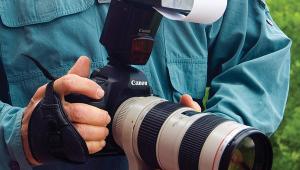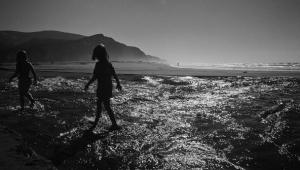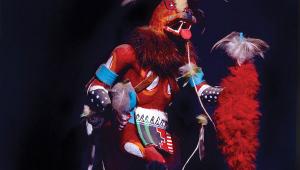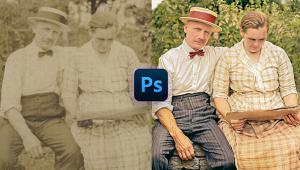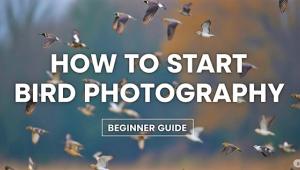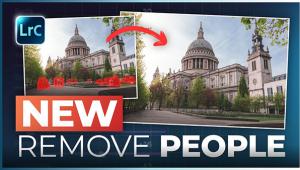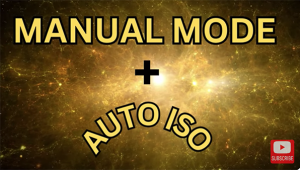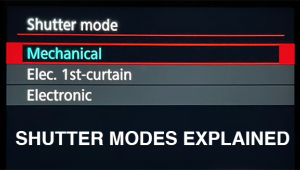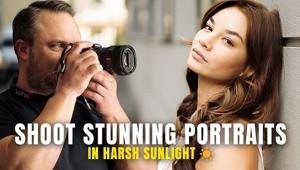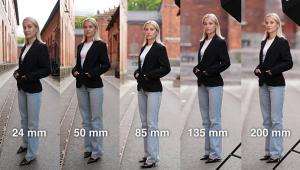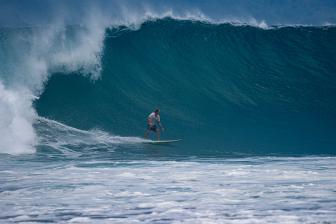Hands-On Exposure Control
Pro Essay
Hands-On Exposure Control
Creative Metering For Expressive Results
by Ibarionex R. Perello
When I began as a photographer, my biggest concern with metering was having an image that just “came out.” That simply meant that the exposure was accurate and the image wasn’t severely under or overexposed. If I had a decent exposure from which I could make a good print, that was all that mattered.
But as I’ve grown as a photographer (and I’ll admit it—as cameras themselves have gotten better and more sophisticated), getting an accurate exposure has become easier. Increasingly, however, I’ve wanted to move beyond that and use metering creatively. I wanted to be able to get exposures that the automatic features of my camera just couldn’t deliver. Many of us have come to rely on and trust the multi-pattern (Evaluative, Matrix, etc.) Metering modes in our cameras. The “optional” spot and center-weighted metering patterns are more “restrictive” in the sense that they emphasize smaller areas of the frame for the purpose of metering. The results with these patterns, however, can often be more dramatic, especially when working with areas of strong contrast.
Multi-Pattern Vs. Selective Metering |
||
 |
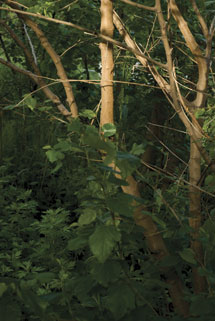 |
|
|
||
Multi-Pattern Vs. Selective Metering
Multi-pattern metering did an excellent job revealing the range of detail from the highlights to the shadows of this tree. That’s exactly what it’s designed to do.
Multi-pattern metering on any D-SLR is meant to capture as much shadow and highlight detail as possible within the camera’s dynamic range.
But what drew me to the scene in the first place wasn’t the whole tree, but the shaft of morning light that was hitting an individual branch. To create the impact of what made me stop in my tracks, I switched over to the camera’s Spot Metering mode and metered off the highlighted branch. I knew that it would underexpose the shadow area of the scene and I would consequently lose shadow detail, but that was fine. I welcomed the increased contrast.
Emphasizing With Light |
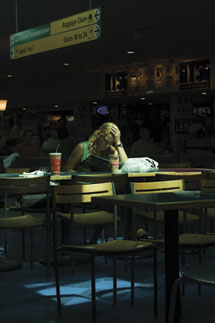 |
Emphasizing With Light
The answer to what Metering mode to use for a given scene comes easily when you ask the question, “What do I want to emphasize in the frame?” If I want detail throughout the entire scene, I won’t hesitate to use the camera’s Multi-Pattern Metering mode. However, if it’s a small element of the frame that I want to bring attention to, then switching to center-weighted or spot metering becomes a no-brainer.
When I saw this woman reading in an airport I was struck by the illumination from the skylight overhead. It was the dramatic lighting and feeling of her isolation that caught my eye. Multi-pattern metering would have provided me shadow detail of the background. That would have been good if I wanted to show more of the waiting area, but that’s not what interested me.
Instead, I switched to spot metering and metered off of her arm, knowing that much of the scene would fall into deep shadow. By obscuring much of what was around her in shadow, the image evokes the feeling of aloneness that resonated with me.
Beginning With Contrast |
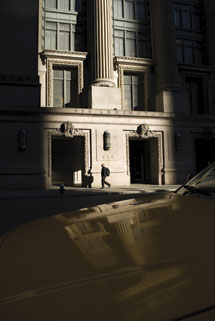 |
Beginning With Contrast
Expressive images often have very strong contrast, with vivid highlights and formative shadows. By exposing for the highlights and letting the shadow go completely to black, I am drawing the viewer’s eye to a dramatic interpretation of a scene.
In midtown New York, I loved the shaft of light that cut through two skyscrapers and hit the façade of this classic building. The Multi-Pattern Metering mode would have provided me more shadow detail, but the image just wouldn’t have the same impact.
I was sitting on a park bench in Central Park, when I saw this lone leaf being backlit by the afternoon sun. There were other leaves in the shadows, which I could have exposed for, but it would have not only detracted from the main leaf, but also would have risked overexposure of what to me was the most important element in the scene.
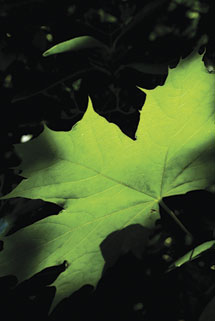 |
Previsualization
My ability to use metering creatively is rooted in my awareness of light and my conscious decision as to how I want my final image to look. When I think about what makes me stop and inspires me to make the image in the first place, the choice of how to meter the scene is revealed.
Making A Creative Lighting Choice |
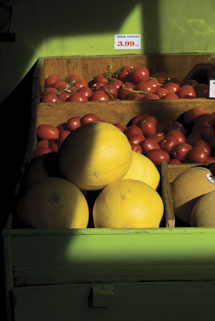 |
Making A Creative Lighting Choice
When evaluating any scene or subject, I am always considering the light and how I want to use it. If I concentrate solely on the subject and don’t consider what’s happening with the light, I am ignoring one of the biggest factors that will make or break the image.
If I had photographed this fruit stand later in the day, the fruit and vegetables would have been in the shade of the canopy. Though the shapes and colors might still have been interesting, the overall shot would have been a lot flatter. By switching to center-weighted metering, I emphasized those things that were being illuminated by the sun, allowing the rest of it to go completely to black.
Working With Extremes |
 |
Working With Extremes
Though not dramatically lit, this portrait of a sailor in Times Square provides a good example when multi-pattern metering might be thrown off by the large presence of white in the frame. I loved the quality of the light that was being reflected onto his face, but knew that the image would likely be underexposed because of his uniform. The simple solution—switching to center-weighted metering and exposing for his face. Though his face was not “neutral,” a quick look at my camera’s histogram let me know that I was risking a slight overexposure of his uniform, which I quickly remedied by using the camera’s exposure compensation feature to underexpose by 2⁄3 stop.
Planning By Seeing |
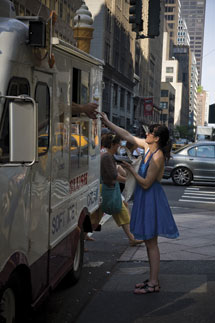 |
Planning By Seeing
Even before I came upon this scene of a woman buying ice cream, I had become aware of how small shafts of light were illuminating the street. In anticipation of finding some subject to take advantage of this light, I switched to center-weighted metering and took a meter reading off the sidewalk itself, which was pretty close to neutral gray. I then set the exposure to Manual mode, thus ensuring that the aperture and shutter speed setting would not change.
When I saw her at the ice-cream truck, I knew I wouldn’t have much time, so I quickly raised the camera to my eyes, focused and shot frame after frame. I didn’t even have time to check my histogram to evaluate for exposure, but because I was confident that she was being illuminated by the same quality of light that I had metered for just minutes before, I knew that all I had to do was hold the camera steady enough to ensure a sharp photograph.
The resulting image is all about the light kissing her face and the fleeting gesture of the hands.
Images like these remind me that metering can be as important a tool in a photograph as a lens, a camera or a filter. Creative metering can help make magic.

